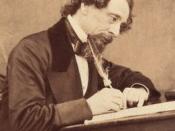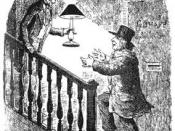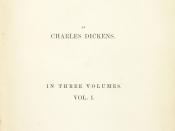The text Great Expectations by Charles Dickens reflects many of the values and attitudes of nineteenth century England. The terms 'values' and 'attitude' are somewhat linked, and are both an integral part of the context of this novel. There was a great divide between the classes at the time of Great Expectations, with each class having its own stereotypical views. This difference led to crime in the city, which served the need for better punishment, as the justice system was quite arbitrary. Attitudes towards the difference between city and country life were also changing with the coming of Industrialisation. Each of these values and attitudes are depicted in the novel through the use of various techniques, such as imagery, characterisation and irony.
During the Victorian Era great differences arose in relation to attitudes towards class. The lower classes were seen as raucous and "rude", while the upper classes maintained the image of high moral qualities and social status.
It is this difference in Great Expectations which allows Compeyson to get away with a lighter charge than Magwitch for the same crime, simply because he was in the upper class. Magwitch is first characterised through a slight caricature as "a fearful man... who had been soaked in water, and smothered in mud, and lamed by stones". Nevertheless, there was a growing criticism towards the upper class during the century especially with the rapid growth of the middle class, and society's attitudes and views towards them changed. This is shown in Great Expectations through the use of irony and characterisation of Compeyson and Drummle, who are initially seen to be in the upper classes of society. Ironically, both are drawn in parallel and are characterised as morally corrupt, as Drummle mistreated his wife and Compeyson was involved in crime. Dickens is...



How "Great Expectations" reflects the values and attitudes of its time.
excellent!
3 out of 3 people found this comment useful.